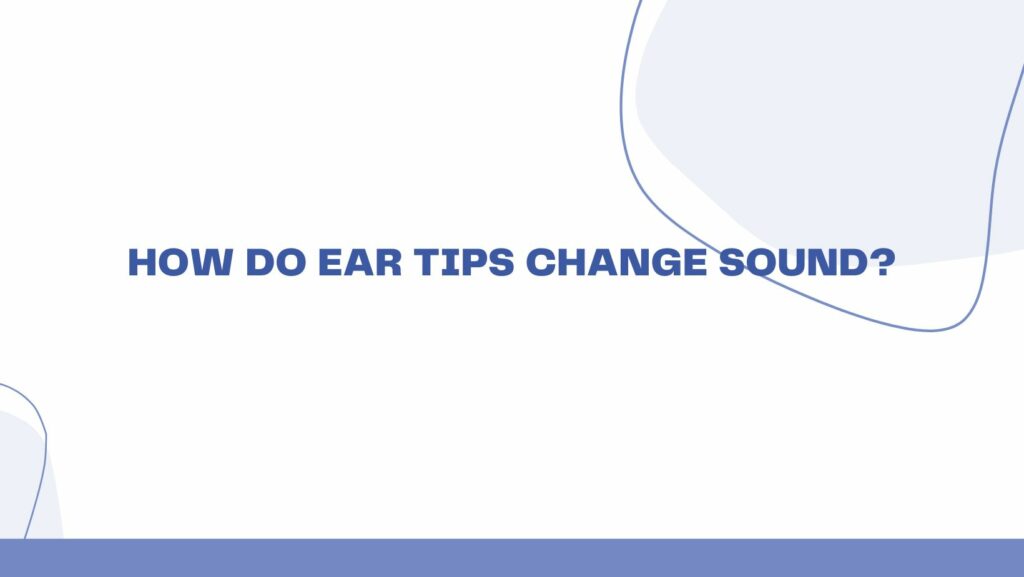As technology continues to redefine the way we experience music, audio enthusiasts find themselves in a perpetual pursuit of the perfect sound. Amidst the myriad of factors that contribute to audio quality, ear tips emerge as unsung heroes, wielding the power to shape and redefine our auditory experience. In this exploration, we unravel the intricacies of how ear tips influence sound, delving into the fascinating interplay between these unassuming accessories and the music that dances through our ears.
The Basics of Ear Tip Dynamics:
Ear tips serve a dual purpose: ensuring a secure fit within the ear canal and acting as a conduit for sound waves from the earphone drivers to the listener’s ears. The material, shape, and size of these small yet crucial components play a pivotal role in determining how sound is transmitted, received, and ultimately perceived.
Material Matters:
The choice of material in ear tips can significantly impact the sound profile. Silicon, memory foam, and rubber are common materials, each with distinct acoustic properties. Silicon tips, for instance, often contribute to a cleaner and more precise sound, while memory foam tips, known for their ability to conform to the ear canal, can enhance isolation and bass response. Understanding the nuances of these materials allows users to tailor their listening experience to personal preferences.
Sealing the Deal: Sound Isolation and Leakage:
A critical aspect of ear tips’ impact on sound lies in their ability to create a proper seal within the ear canal. An effective seal not only enhances sound isolation by blocking external noise but also prevents sound leakage, ensuring a more immersive and focused audio experience. Users seeking a balance between ambient awareness and isolation can experiment with different ear tip designs to find the ideal compromise.
Bass Response: The Low-Frequency Connection:
The seal formed by ear tips influences bass response, making them a key player in the low-frequency domain. A well-sealed ear tip allows for improved bass extension and a tighter, more impactful low end. Conversely, a poor seal can result in bass leakage and a muddier overall sound. Audiophiles often experiment with different ear tip styles to find the sweet spot that complements their desired bass signature.
Tailoring the Midrange and High Frequencies:
Beyond bass, ear tips also contribute to the midrange and high-frequency performance. The materials and design can affect the clarity of vocals, the crispness of instruments, and the overall tonal balance. Some users may find that certain ear tips accentuate specific frequencies, adding warmth or brightness to the overall sound signature.
Comfort and Extended Listening Pleasure:
While the impact on sound quality is paramount, the comfort of ear tips is equally crucial, especially during extended listening sessions. Uncomfortable ear tips can lead to listening fatigue and compromise the overall enjoyment of music. Optimal fit and comfort contribute to a more immersive and enjoyable audio experience.
Conclusion:
In the grand symphony of audio, ear tips stand as orchestrators of sound, molding and sculpting the musical landscape that reaches our ears. From material choices influencing tonal characteristics to the seal determining bass response, these seemingly small accessories play a pivotal role in our auditory journey. As audio enthusiasts continue to explore the nuances of their preferred ear tips, the connection between these unassuming components and the magic of music becomes all the more apparent, reminding us that even the smallest details can shape the way we perceive sound.


